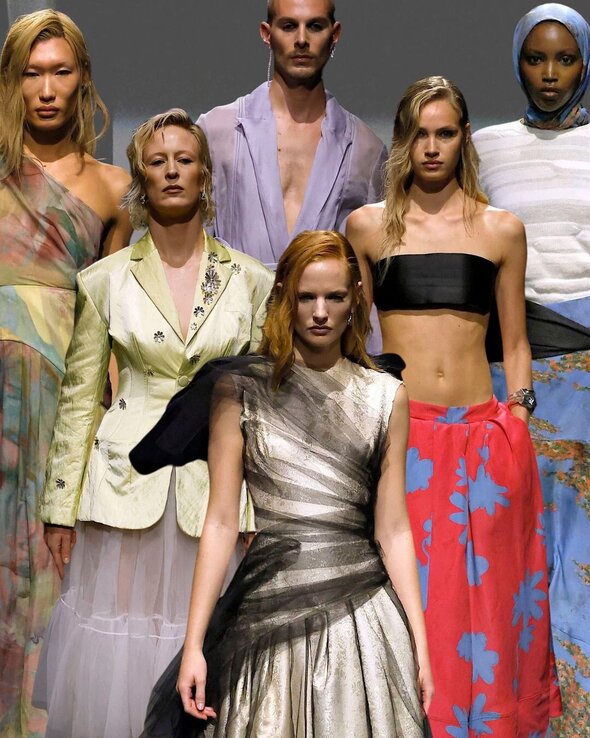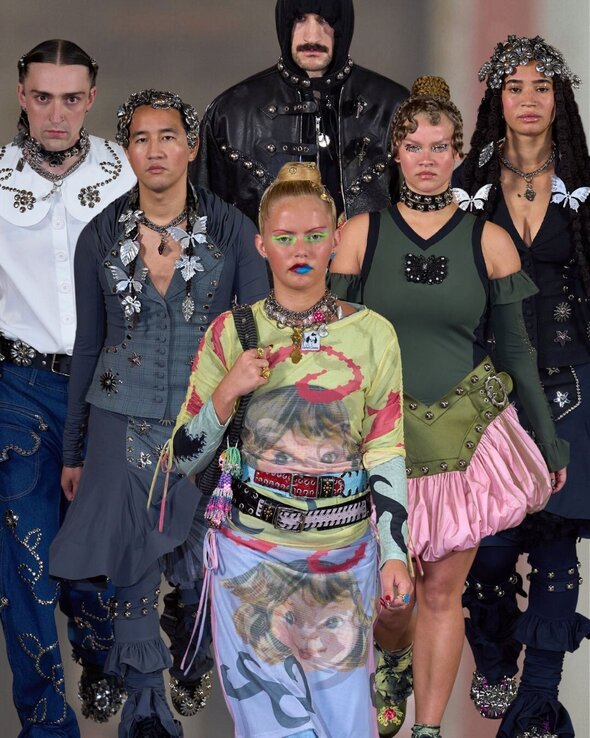Hey fashion, it’s time for a new look!
In a city celebrated for its eclectic edge, innovation, and willingness to push boundaries when it comes to fashion, London Fashion Week SS25 was a true showcase of talent, culture, and creativity. Mainstays like JW Anderson demonstrated how to do more with less while newcomers such as Skepta's MAINS brought 90s/00s garage nights and collegiate nostalgia to the catwalk. Even more exciting was the surge of brands weaving sustainability into their shows. For these designers, the intersection of heritage and circularity took centre stage, with innovative approaches that never compromised on style. From upcycled fabrics to meticulous craftsmanship, designers like Priya Ahluwalia, Patrick McDowell, and Chopova Lowena are leading the charge—seamlessly blending cultural storytelling with environmental consciousness, in a way that feels authentic, a natural byproduct of making fashion for the future.
Words: Lydia Oyeniran
Photo credit: TagWalk
“Creative vision and sustainability can go hand in hand and actually, they complement each other and you can create something incredible that is better for the planet.” —Patrick McDowell (for Bricks Magazine)
Photo credit: Vogue
"Being environmentally and socially conscious is something that is very important to us, we want people to engage with the history of each garment, how it was made, where it has come from and, when they’re finished enjoying the piece, to be able to give it a new life." —Priya Ahluwalia
“Kick the bloody doors in, destroy, redesign, create something new”
Photo credit: Vogue
As these collections prove, it’s possible to create fashion that’s as sustainable as it is innovative. Brands that embrace circularity continue to set a new standard for the industry. For other labels looking to follow suit, the path to sustainability doesn't have to be daunting. With the help of tools like CircKit, your fashion brand can make informed decisions about sourcing low-impact fabrics, balance cost with environmental considerations, and seamlessly showcase your sustainability efforts. The future of fashion is circular, and technology is here to help make it a reality. Try CircKit today!



